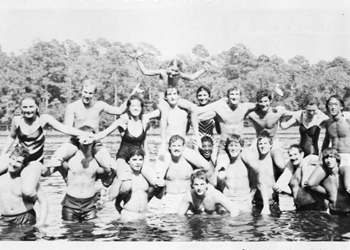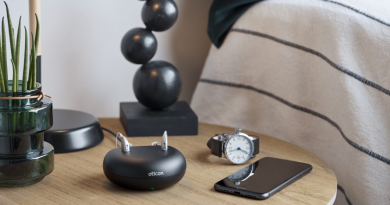What to do if water gets in your ears
Water can get in your ears, whether you are in the shower or taking a dip in the pool. Depending on how long the water is there, it can lead to painful ear infections.
Dr. Angela Peng, assistant professor in the Bobby R. Alford Department of Otolaryngology-Head and Neck Surgery, explains what to do if water gets in your ears, how to prevent it, and the symptoms of an ear infection.
“The amount of water that gets in your ears depends on your circumstance. If you are showering, it might sit right inside the ear, but if you are swimming or diving, the water might travel deeper,” Peng said. “It depends on a person’s anatomy and how much water the ear has been exposed to. The ear canal can be tortuous, so water doesn’t always hit the eardrum.”
For those without a history of ear infections, she suggests several options for removing water from their ears. You can shake your head and put a tissue around your pinky finger to wick out the water on the edge of your inner ear, let it dry naturally, or use a hair dryer.
“You can use a hair dryer on a low, cool setting at least two feet away to help dry the outer ear. Keep in mind that Q-tips or other instruments used to clean the ears may push and impact deeper into the canal towards the eardrum.”
She also shares that there is an at-home remedy to try.
“You can mix rubbing alcohol and white, plain vinegar and put one or two drops in the ear canal. This can kill off any fungus or bacteria your ears were exposed to,” Peng said. “However, if you have a history of chronic ear infections or have had prior ear surgeries, I recommend letting your ears dry naturally and not using over-the-counter drops. If you start to have symptoms of an ear infection, please see a doctor.”
Ear infection symptoms include pain, pressure, smelly drainage or tinnitus.
To prevent water from entering your ears, she says there are several options you can purchase.
“There are certain silicone plugs that you can use on a one-time basis; they are little circles that you can put inside your ears, and they will mold to the ear canal. If you shower and don’t want water to get in your ears, place a cotton ball at the entrance of your ear canal and place a thin smear of Vaseline as a sealant over the cotton ball. Make sure to throw it away once you’re finished. You can also purchase an ear cover that looks like shower caps for your ears,” Peng said.
By Taylor Barnes




my problem is water got in my ear showering and now I can’t hear